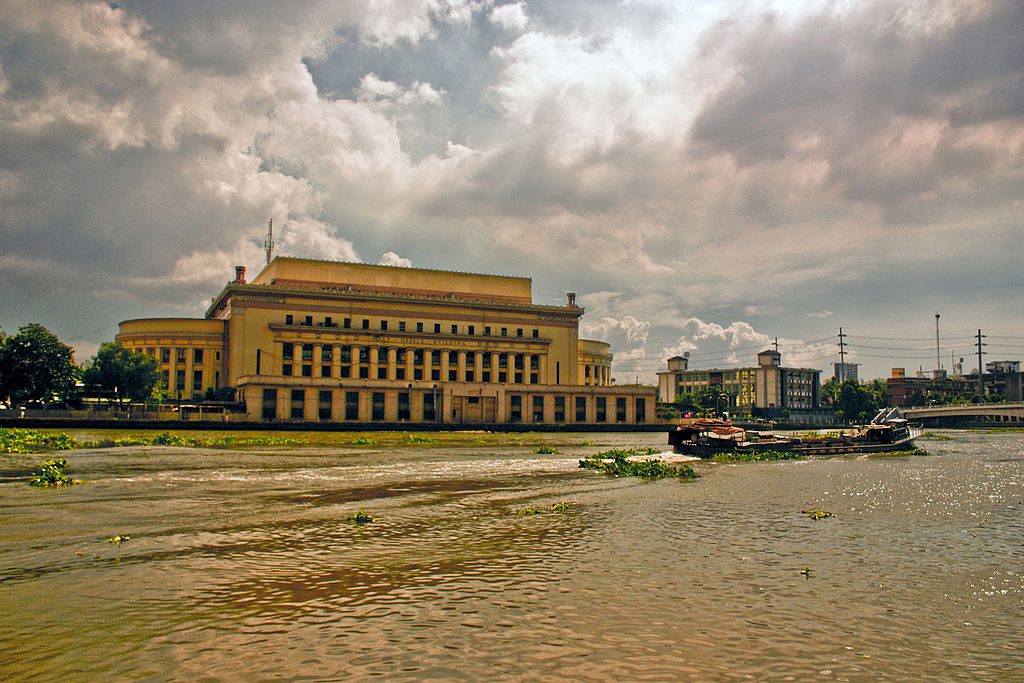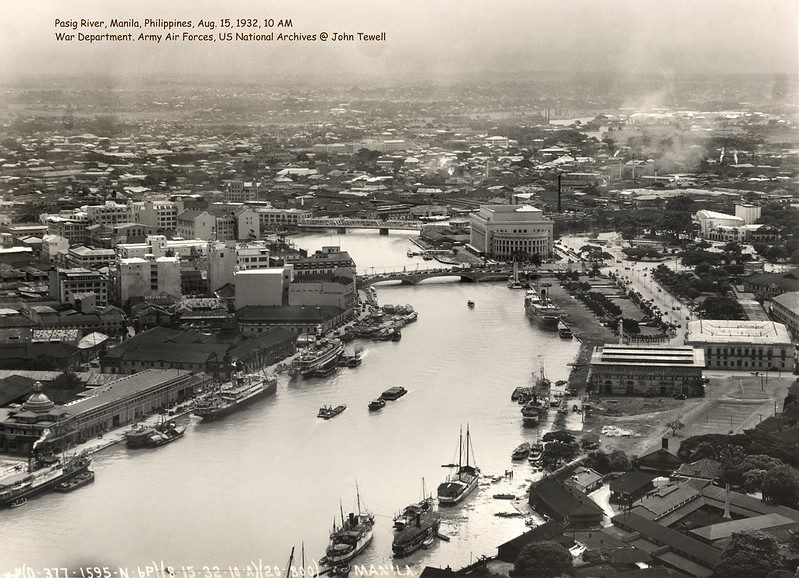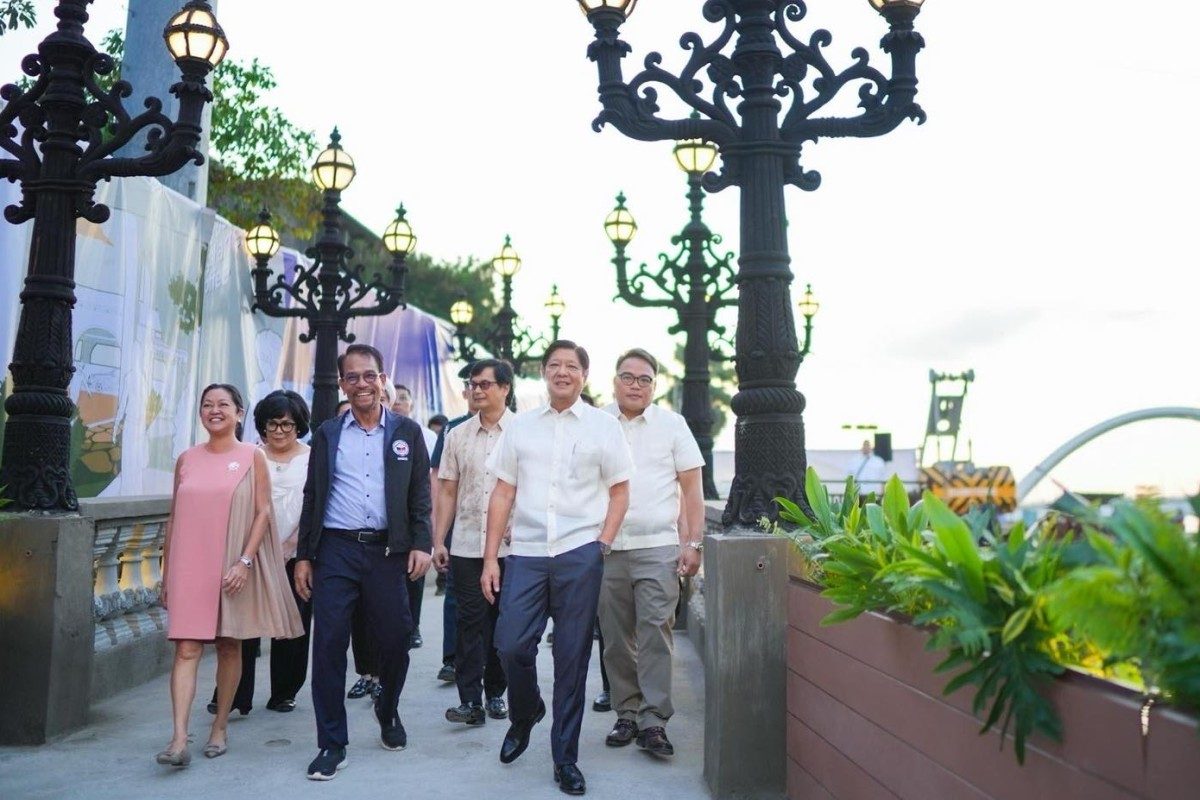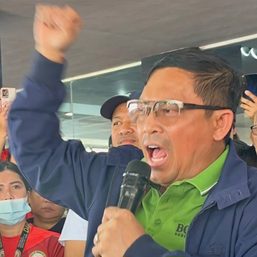SUMMARY
This is AI generated summarization, which may have errors. For context, always refer to the full article.

The Philippine government has been trying to save the Pasig River for half a century already.
The 26-kilometer waterway goes through the heart of the country’s metropolis and connects Laguna de Bay to Manila Bay.
The river and its esteros fed, sheltered, and gave livelihood to the people of Manila. A century ago, before industrialization took place in Manila, the river was clean enough for people to bathe and wash their clothes in.
But these – the residential and industrial waste from activities in its vicinity – are also some of the reasons that made its waters murky and the object of government attention for the past 50 years.
In the same way that a river is the cradle of a great city, the decay of a river is also synonymous with the deterioration of a city – in this case, Manila, the Philippine capital and home to more than 1.8 million Filipinos.
“If you can’t fix the Pasig, you can’t fix the metropolis,” urban historian and architect Paulo Alcazaren told Rappler in an interview.

Past administrations
The 50-year history of the Pasig River rehabilitation started in 1973, when the dictator Ferdinand E. Marcos ordered the implementation of the Pasig River Development Program under Presidential Decree No. 274.
At that time, the deterioration of the Pasig River was dire and its beauty “overshadowed” that it became “imperative” to start the program. The program put emphasis on beautification as much as it did on preservation.
Despite the program, the Marcos administration did not succeed in rehabilitating the river. Instead, the problem was passed down from one administration to another, with succeeding presidents starting their own initiatives to save the river.
After the 1986 EDSA Revolution, then-president Corazon Aquino spearheaded the Pasig River Rehabilitation, aided by the Danish International Development Assistance in 1989.
Fidel V. Ramos later created the Presidential Task Force on Pasig River Rehabilitation in 1993. The first lady then, Amelita “Ming” Ramos, complemented this with her own efforts with civil society organizations.
Six years later, in 1999, Joseph Estrada formed the Pasig River Rehabilitation Commission (PRRC), which would last for 20 years until Rodrigo Duterte abolished it in 2019 as the river was, according to him, already “clean.”
Despite saying this, however, Duterte himself also said that nothing would really happen with the river unless the government dealt with “every building” and “everybody who has the waste going down in a sewage or sewerage.”
In a way, the former president was right.
The Pasig River has long been known as Manila’s toilet bowl. According to reports in 2021, the area near Delpan Bridge had a fecal coliform count of 17 million most probable number per 100 milliliters (MPN/100 ml). The acceptable standard for Class C (which the Pasig River was classified as) is 200 MPN/100 ml.
Alcazaren described the PRRC’s 20-year existence as an “uphill battle.” While there were efforts to clean the river, these were canceled out by industrial and chemical waste from factories nearby, the trash from settlements in the esteros, and human feces.
A study in 2021 said the Pasig River accounts for 63,000 tons of plastic that enter the oceans every year.

Between the Estrada and Duterte administrations, the government launched the ferry service and partnered with private entities such as the Lopezes’ ABS-CBN Foundation Inc. and recently, businessman Ramon Ang’s San Miguel Corporation (SMC).
Gloria Macapagal-Arroyo, meanwhile, declared dredging works in the river as a presidential priority project in 2008.
For environmentalist Reach Peñaflor, the state of a country’s rivers is a reflection of the state of its governance.
“If you maintain the cleanliness of the river, that means there’s no more decay, no more corruption in the government,” Peñaflor, former deputy director for operations of the PRRC during the Aquino administration, told Rappler in an interview.
Peñaflor served from 2010 to 2013, when the late Gina Lopez was PRRC chairperson. He said the PRRC during their term was able to rehabilitate the esteros in Paco, San Miguel, Sampaloc, Quiapo, and Aviles.
He recalled the time Lopez invited Aquino to visit Estero de San Miguel.
“He was surprised by the condition of that estero. He personally allocated funds for rehabilitation of the Estero de San Miguel and increased the budget of PRRC [from] 2010 [to] 2016,” Peñaflor told Rappler.
That the river cuts through many major cities – such as Mandaluyong, Makati, and Manila – was a huge problem for the PRRC. The commission had to deal with uncooperative local government officials and right-of-way issues.
In the year the PRRC was abolished, the Commission on Audit flagged them for not having accomplished enough and for failing to anticipate problems, including those that arise from local officials.
A year before that, the PRRC received the first Asia RiverPrize Award for its rehabilitation efforts, beating China’s Yangtze River.
Another Marcos by the river
The Malacañang in San Miguel, Manila, is just a stone’s throw from the river. So, it might just be natural that the first couple residing in the Palace would be invested in rehabilitating it – an undertaking that could be as domestic as it is a national concern.
“Aside from the practical and environmental reasons to ‘save’ the river, rehabilitation efforts also come from stories of the river’s significance as a former ‘highway’ both from national and local narratives,” historian Wensley Reyes told Rappler.
“The necessity to rehabilitate the legendary river may be a result of a nostalgic urge to experience the river’s former glory.”
Reyes said taking back the river’s former glory “would secure a lasting impact for the generations to come, sealing a presidential legacy worth emulating and remembering.”
Today, the incumbent president also takes on this campaign, inheriting the same problem his father tried to solve 50 years ago.
With the PRRC gone, the Marcos administration has created another council to rehabilitate the river. In 2023, Marcos formed the Inter-Agency Council for the Pasig River Urban Development under Executive Order No. 35.
The council is led by Department of Human Settlements and Urban Development Secretary (DHSUD) Jose Rizalino Acuzar and acting Metropolitan Manila Development Authority chairperson Romando Artes.
The President said he envisioned “a living river” when the government launched its Pasig Bigyang Buhay Muli program in January 2024.
A living river would have “civic spaces where our children will play, our seniors relax, families will exercise, artists can showcase their talents, and the creative can display their wares,” Marcos said.
The council is set to create eight more esplanades along the river in three to five years. Since the creation of the council, however, only the esplanade behind the Central Post Office has been developed so far.
A First Lady’s project
Not only presidents have taken on the task to clean the river – their spouses have taken up the cause, too.
Filipino historian Xiao Chua pointed out that the environment is usually associated with first ladies and presidential wives, which they “can make an advocacy.”
The preservation program of the elder Marcos back in 1973, for example, was headed by his wife Imelda. As governor of Metro Manila and minister of human settlements back then, Imelda had asked the Metrocom to assign policemen to monitor the work of river aides.
A piece published in The Republic in September 1973 was optimistic about the work cut out for the first couple then: “One day, with the Pasig revitalization program promising thus, the tropical vegetation on the banks will once more grow, the motorboats, barges, rowboats and cargoboats will again anchor and trade in a habitable commercial waterway, and the sights by the river will then recall the Pasig that Rizal, Balagtas and Abelardo knew.”
But perhaps the most known first lady to clean up the river is Ming Ramos, presidential spouse from 1992 to 1998, and also a staunch environmentalist. In the same year that her husband created the presidential task force for the Pasig River, Ming headed 30 non-government organizations and established the Sagip Pasig Movement.
The movement sought to make “clean river zones,” where communities and concerned sectors were mobilized to manage waste from residential, commercial, and industrial sources.
Ming Ramos also started the fundraising campaign Piso Para sa Pasig in 1995.
Today, the current First Lady Liza Araneta Marcos is fashioning her own legacy around the Pasig River.
In press releases, the rehabilitation of the river is often credited not only to the President, but to the First Lady as well.
Liza Marcos envisioned mixed-use establishments rising along the river from Manila to Pasig. It is consistent with her husband’s executive order seeking to develop the banks, tributaries, and communities along the river.
“‘Yan po talaga ang vision ni Pangulong Ferdinand R. Marcos Jr. at First Lady Marie Louise Araneta-Marcos para sa Ilog Pasig,” DHSUD Secretary Acuzar said in a statement. “Kaya ang ating approach ay gawing people-centered at community-driven ang rehabilitation project.“
(That’s really the vision of President Ferdinand R. Marcos Jr. and First Lady Marie Louise Araneta-Marcos for the Pasig River. That’s why our approach is to make the rehabilitation project people-centered and community-driven.)

Today, the ferry service has been revived.
The ferry, which has 11 operational stations out of the total 13, is being promoted as an alternative mode of transportation amid the worsening traffic conditions in the metro.
Despite it being a viable alternative, some commuters have complained about the unreliability of the ferry service’s schedule.
In addition, sport fishing is now possible in the river, but catch is not yet safe for consumption.
San Miguel: A private power player
But the first couple is inheriting not only the five-decade old struggle to save the river.
In 2021, different sectors opposed and protested against the controversial Pasig River Expressway (PAREX), the SMC’s proposed P95-billion elevated expressway along the river.
For instance, they continue to monitor developments regarding PAREX, especially in light of Ramon Ang’s recent backpedalling on the project’s cancellation.
The tycoon confirmed that they have not yet sent their formal withdrawal from the Toll Regulatory Board.
Ang said last March that they were no longer pushing through with the expressway project. SMC had to clarify the following day on March 19 to the Philippine Stock Exchange that they were contemplating “not to proceed” and were “evaluating the financial and technical viability” of the project.
In similar fashion, SMC has not yet given any formal communication to withdraw its application for an environmental compliance certificate (ECC), the Environmental Management Bureau told concerned groups in a letter dated May 13. Rappler reached out to SMC but the company has yet to confirm the exact status of its ECC application.
Critics have said that PAREX would only promote car-centricity, worsen traffic congestion, and “photobomb” heritage sites along the Pasig River.
The Pasig River has been as much of a cause, if not more, for various civil society groups as it has been for presidents in the last five decades.
Members of volunteer group Ilog Pasiglahin had said they would support the first couple’s program if concerned communities will be consulted about the rehabilitation of the river.
In a separate interview with Rappler, Joven Jacolbia of Ilog Pasiglahin said the movement now that seeks to conserve the Pasig River has become more comprehensive and goes beyond cleanups.
Ilog Pasiglahin is composed of heritage conservation advocates, environmentalists, cyclists, and academics, and their campaign encompasses issues related to their causes.
“‘Di lang dapat simpleng pagpapaganda ng Ilog Pasig,” Jacolbia said. “It will not be sustainable kunwari dredging lang, pintura. Kailangan interconnected siya.”
(It shouldn’t be a simple beautification of the Pasig River. It will not be sustainable if you only do dredging or a paint job. Efforts need to be interconnected.)
In 2021, three months before SMC broke ground for PAREX, it had partnered with the environment department to clean up the river. SMC’s dredging operations continue – as of May 2024, SMC reported the removal of “nearly 1.2 million metric tons of waste” from the river.
As history shows, for the past 50 years, Malacañang has taken a keen interest in the Pasig River.
Acuzar had said that no government money was used in the first phase – the development of the esplanade behind the Post Office – of the Marcoses’ Pasig Bigyang Buhay Muli.
Tycoons, including Jaime Augusto Zobel de Ayala, Lance Gokongwei, and Manny Villar, were reportedly backing the P18-billion project.
Fifty years on, the rehabilitation of the Pasig River continues to drag, its sludge and filth enduring generations and administrations.
The presidency may change, but in many ways, the river remains the same. – Rappler.com
Reviving Pasig River and developing it sustainably is among ways groups believe we can #MakeManilaLiveable.
On Rappler, we have created a dedicated space for stories and reports about liveability in Philippine cities. Learn more about the movement here.
Add a comment
How does this make you feel?





![[OPINION] Grading Marcos admin’s performance on the climate agenda](https://www.rappler.com/tachyon/2024/06/grading-marcos-performance-climate-agenda-june-25-2025.jpg?resize=257%2C257&crop=441px%2C0px%2C1080px%2C1080px)
![[In This Economy] Marcos’ POGO ban is popular, but will it work?](https://www.rappler.com/tachyon/2024/07/thought-leaders-marcos-pogo-ban.jpg?resize=257%2C257&crop=255px%2C0px%2C720px%2C720px)
![[Rappler Investigates] POGOs no-go as Typhoon Carina exits](https://www.rappler.com/tachyon/2024/07/newsletter-graphics-carina-pogo.jpg?resize=257%2C257&crop=424px%2C0px%2C1080px%2C1080px)












![[Just Saying] SONA 2024: Some disturbing points](https://www.rappler.com/tachyon/2024/07/TL-marcos-sona-points-july-23-2024.jpg?resize=257%2C257&crop=335px%2C0px%2C720px%2C720px)

![[Rappler Investigates] What’s it all about, Alice?](https://www.rappler.com/tachyon/2024/05/alice-guo-newsletter-may-30-2024.jpg?resize=257%2C257&crop=292px%2C0px%2C720px%2C720px)


![[Be The Good] PAREX and the power of communities](https://www.rappler.com/tachyon/2024/03/parex-protest-newsletter-mar-21-2024.jpg?resize=257%2C257&crop=275px%2C0px%2C720px%2C720px)
There are no comments yet. Add your comment to start the conversation.